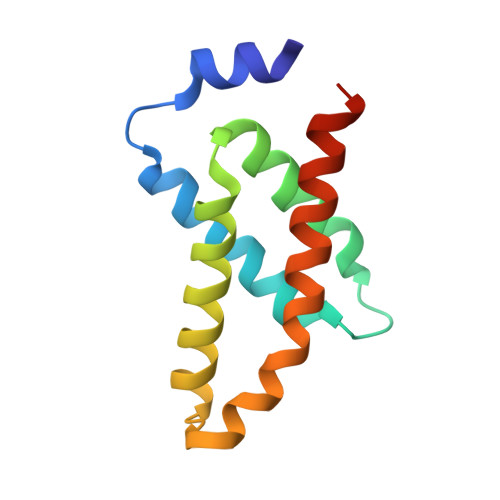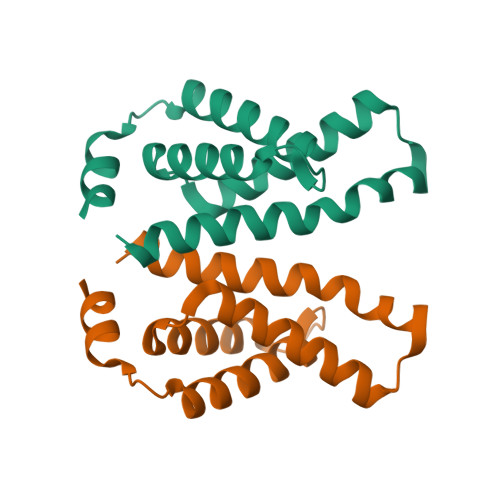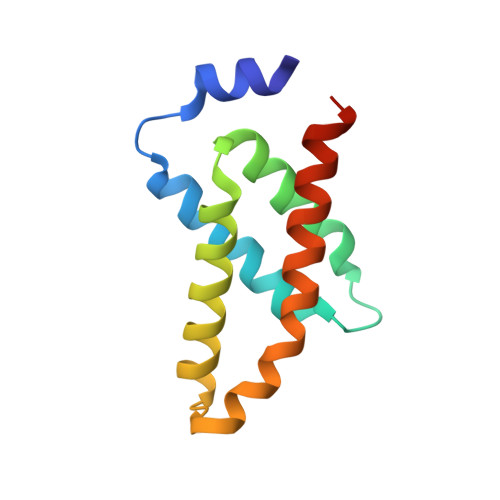Crystal structure of the C-terminal clock-oscillator domain of the cyanobacterial KaiA protein
Uzumaki, T., Fujita, M., Nakatsu, T., Hayashi, F., Shibata, H., Itoh, N., Kato, H., Ishiura, M.(2004) Nat Struct Mol Biol 11: 623-631
- PubMed: 15170179
- DOI: https://doi.org/10.1038/nsmb781
- Primary Citation of Related Structures:
1V2Z - PubMed Abstract:
KaiA, KaiB and KaiC constitute the circadian clock machinery in cyanobacteria, and KaiA activates kaiBC expression whereas KaiC represses it. Here we show that KaiA is composed of three functional domains, the N-terminal amplitude-amplifier domain, the central period-adjuster domain and the C-terminal clock-oscillator domain. The C-terminal domain is responsible for dimer formation, binding to KaiC, enhancing KaiC phosphorylation and generating the circadian oscillations. The X-ray crystal structure at a resolution of 1.8 A of the C-terminal clock-oscillator domain of KaiA from the thermophilic cyanobacterium Thermosynechococcus elongatus BP-1 shows that residue His270, located at the center of a KaiA dimer concavity, is essential to KaiA function. KaiA binding to KaiC probably occurs via the concave surface. On the basis of the structure, we predict the structural roles of the residues that affect circadian oscillations.
Organizational Affiliation:
Center for Gene Research, Graduate School of Science, Nagoya University, Furo-cho, Chikusa-ku, Nagoya 464-8602, Japan.
















